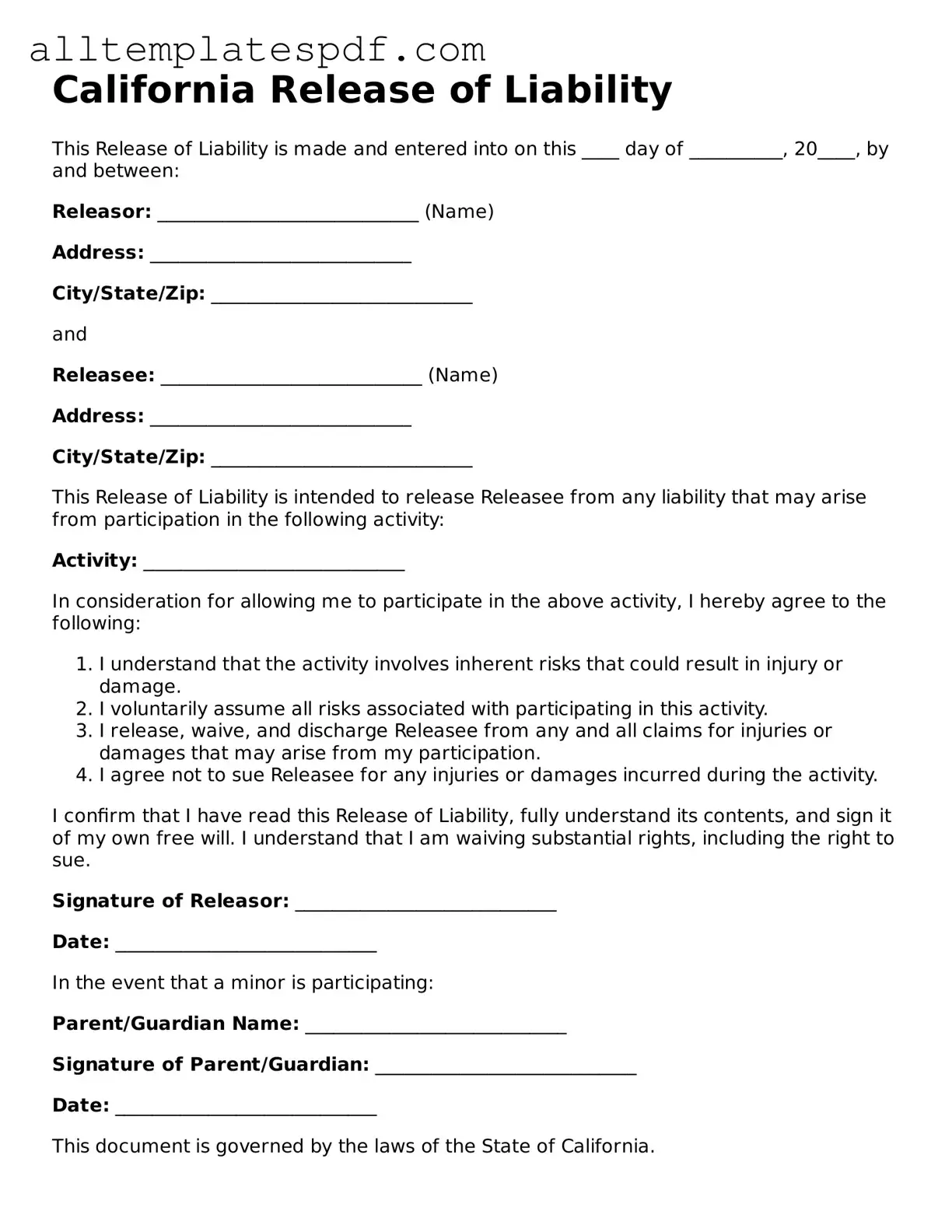Blank Release of Liability Template for the State of California
The California Release of Liability form is a legal document that protects individuals and organizations from being held responsible for injuries or damages that may occur during specific activities. By signing this form, participants acknowledge the risks involved and agree not to hold the organization liable. If you plan to engage in activities that could pose risks, consider filling out the form by clicking the button below.
Open Editor
